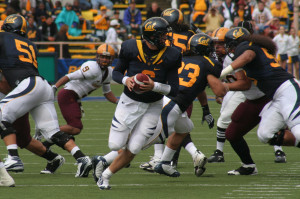Contributor: Paul Pound, MS, Mphil, LPC, LCADC, ACS of StrongMind Counseling
 Anabolic – androgenic steroids (AAS) are synthetic compounds structurally related to testosterone that promote muscle growth and have masculinizing effects. They have been used by athletes who attempt to gain an edge in competition.
Anabolic – androgenic steroids (AAS) are synthetic compounds structurally related to testosterone that promote muscle growth and have masculinizing effects. They have been used by athletes who attempt to gain an edge in competition.
AAS were discovered in 1935 and have been researched and synthesized since then to help reduce the androgenic (masculinizing) effects. The original objective of the medical community was to produce a drug that could treat breast cancer, bone loss, burns and recovery from surgery.
AAS has also been used by psychiatrists to treat mood disorders in order to improve mental alertness, mood elevation and concentration (Uzych, 1992). It is possible the German army of World War II was the first illegitimate user of anabolic steroids (Daigle, 1990).
The Spread of AAS
The spread of AAS use in the male athletic community has been rapid. In the 1940’s AAS were used by Soviet Union and Eastern European weightlifting teams. The United States pharmaceutical industry responded in 1958 with the first Food and Drug Administration approved AAS (Fair, 1988). The early beginning of AAS use by a small number of Olympic level athletes has seen a spread to the greater athletic community.
The United States has attempted to control AAS use with the addition of anabolic steroids to Schedule III of the Controlled Substance Act and the Anabolic Steroid Act of 1990. This act was amended by the Anabolic Control Act of 2004 which included prohormones as part of the list of controlled substances (Murphy, 2005).
Despite a ban on AAS by all major sporting organizations the use of anabolic steroids has increased among all levels of athletes including those at high school (Inaba and Cohen, 2007).
When Only Winning Matters
 An attitude that accepts only winning is often promoted by coaches and parents who push their athletes to keep up with their competition (Center of Addiction and Substance Abuse, 2000). The athletic environment that condones the win- at – all – cost approach appears to encourage AAS use and provides a context that appears to accept this strategy as rational (Goldberg et al., 1996).
An attitude that accepts only winning is often promoted by coaches and parents who push their athletes to keep up with their competition (Center of Addiction and Substance Abuse, 2000). The athletic environment that condones the win- at – all – cost approach appears to encourage AAS use and provides a context that appears to accept this strategy as rational (Goldberg et al., 1996).
Goldberg et al. (1996) found high school football players who were committed to winning at – all – cost were more likely to use anabolic performance enhancing steroids. The extreme motivation to achieve in professional sports may be due to considerable financial rewards. African American parents are four times more likely than Anglo Americans to see their adolescent athlete as an opportunity for economic gain (Edwards, 1992).
This may be due to the perception created by successful African American professional athletes in high profile sports. Although African Americans constitute 13 percent of the general population, recent NFL surveys revealed that the NFL is made up of approximately 68% African-American athletes, while 76 percent of the National Basketball League.
Side-Effects of Anabolic Steroid Abuse
Personality assessment characteristics of steroid users have revealed notably higher levels of assertion and impulsiveness. The misuse of anabolic - steroids has been linked to:
- Sleep disorders
- Anxiety
- Mania
- Depression
- Homicidal ideation (NIDA, 2005)
Aggression and violence is often cited as a major problem with male athlete AAS users due to the alteration of brain development for aggressive inhibition. Recent neuroscience research has highlighted the link between testosterone and approach – avoidance behavior. The use of AAS has also been associated with the exploitation of cigarettes and alcohol.
Achieving No Matter What
 The extreme motivation to succeed athletically by some athletes who use AAS can be defined as an attempt to achieve in a conventional environment using unconventional means. Bamberger and Yeager (1995) found over 50% of the Olympic and aspiring Olympic athletes they interviewed stated they would use banned performance enhancing substances if they were not discovered and could be guaranteed first place in each of their competitions despite the possibility of death in the next five years.
The extreme motivation to succeed athletically by some athletes who use AAS can be defined as an attempt to achieve in a conventional environment using unconventional means. Bamberger and Yeager (1995) found over 50% of the Olympic and aspiring Olympic athletes they interviewed stated they would use banned performance enhancing substances if they were not discovered and could be guaranteed first place in each of their competitions despite the possibility of death in the next five years.
This attitude appears to continue with today’s successful athlete’s use of anabolic steroids. Both Lance Armstrong (Cycling) and Marian Jones (Sprinting) exemplify the extreme need to get to the top of their chosen sport. Both Armstrong and Jones reached the highest levels of their sport and revealed AAS use.
These revelations resulted in criminal consequences for Jones and on - going legal action against Armstrong with both having all sporting successes removed from the record books. Sport often represents the role of the individual within their community and family.
The Family Intensive Sport Environment
Sport has become an integral part of the family in the United States. The psychological development of many young people is enmeshed in the process of achieving success in sport. This phenomenon has been described as a family intensive sport environment (Helledt, 1990). The family invests both time and financial resources into the development of the family athlete, which can result in tremendous pressure on the athlete to succeed.
The adolescent athlete that is overwhelmed by controlling parents, demanding training schedules and the pressure of academic standards may withdraw from family relationships to a world outside of conventional thought.
Parents who pressure their adolescent athlete with criticism often have high expectations of their athletic performance (Goodger et al. 2007). The pressure felt by the adolescent athlete could result in cognitive exhaustion and AAS use.
Finding Fulfillment Through Success
 Athletes often find the fulfillment of many psychological needs through their successes in sport. The use of AAS is attractive to those who want to gain an unfair advantage over their competition in an effort to gain the many rewards.
Athletes often find the fulfillment of many psychological needs through their successes in sport. The use of AAS is attractive to those who want to gain an unfair advantage over their competition in an effort to gain the many rewards.
The consequences of AAS abuse range from criminal offenses to health related concerns. The male athlete who understands that rewards in life come from internal satisfaction will no longer seek unhealthy methods to obtain the external rewards. Internal rewards become acknowledged as the best one can do within the rules of the competition.
Community Discussion – Share your thoughts here!
What steps can we take as an addiction community to bring awareness to the dangers of steroid use and the importance of inward satisfaction in competitive sports?
References:
- Center for Addiction and Abuse National Commission on Sports and Substance Abuse (2000). Winning at any cost: Doping in Olympic sport. A Report Prepared for the U.S. Office of National Drug Control Policy, New York: Center for Addiction and Substance Abuse.
- Daigle, R. D. (1990). Anabolic Steroids. Journal of Psychoactive Drugs 22 (1): 77-80.
- Edwards, H. (1992). Are we putting too much emphasis on sports? Blacks in sports: The next 45 years. Ebony, Retrieved July 19, 2008 from http://findarticles.com/p/articles/mi_m1077/
- Fair, J. (1988). Olympic weight-lifting and the introduction of Steroids: A statistical analysis of the world championship results, 1948-72. International Journal of the History of Sport.
- Golberg, L, Elliott D., Clarke, G., MacKinnon, D., Moe, E., Zoref L., Green, C, Wolf, S, Greffrath, E. miller, D., & Harrison, L. (2007). Redefine the finish line: Overemphasis on athletic success may limit academic pursuits for African American children. The University of North Texas at Austin, Retrieved July 18, 2008 from http://www.utexs.edu/features/2007athletics/index.html
- Helledt, J. (1990, September). Early adolescent perceptions of Parental pressure in the sport environment. Journal of Sport Behavior, 13(3), 135-144. Retrieved July 27, 2008, From PsycINFO database.
- Karila T. (2004). Concomitant abuse of anabolic androgenic Steroids and human chorionic gonadotrophin impairs
- National Institute on Drug Abuse (2000) Research Report Series: Anabolic Steroid Abuse. Retrieved July 29, 2008 from www.steroidabuse.org
- Murphy, S. (2005). The sport psych handbook. Champaign, IL: Human Kinetics.
- Uzych L. (1992). Anabolic steroids and psychiatric related Effects: A review. Canadian Journal of Psychiatry, 37, 23-28.
- Yesalis, C., E, & Bahrke, M., S. (1995). Anabolic – androgenic steroids. Sports Medicine, 19, 326
The opinions and views of our guest contributors are shared to provide a broad perspective of addiction. These are not necessarily the views of Addiction Hope, but an effort to offer discussion of various issues by different concerned individuals.
Last Updated & Reviewed By: Jacquelyn Ekern, MS, LPC on June 26th, 2015
Published on AddictionHope.com
